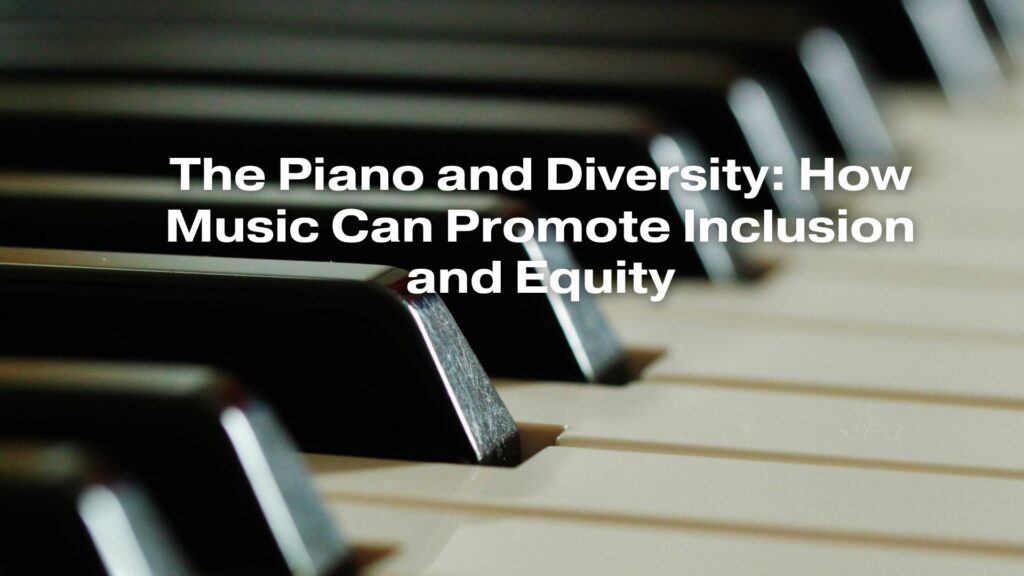Music, with the piano as one of its most versatile and accessible instruments, has the power to transcend cultural, social, and economic boundaries, making it a potent force for promoting diversity, inclusion, and equity. In this article, we’ll explore how the piano and music as a whole contribute to fostering a more inclusive and equitable world.
1. Universal Language:
- Music is often described as a universal language that can be understood and appreciated by people from diverse backgrounds, fostering connections and understanding.
2. Cultural Exchange:
- The piano’s extensive repertoire encompasses music from a wide array of cultures and traditions, allowing for cross-cultural exchange and appreciation.
3. Diverse Composers and Repertoire:
- The contributions of composers from diverse backgrounds, such as George Gershwin, Astor Piazzolla, and Clara Schumann, enrich the piano repertoire and celebrate cultural diversity.
4. Representation:
- Highlighting the work of pianists and composers from underrepresented communities promotes greater representation and diversity in classical music.
5. Music Education:
- Access to music education, including piano instruction, can be a powerful tool for promoting equity by providing opportunities for underserved communities.
6. Community Building:
- Playing and appreciating music, including piano music, fosters a sense of community and belonging among people of different backgrounds.
7. Empowering Voices:
- Music offers a platform for individuals to express their stories, struggles, and aspirations, giving voice to marginalized communities.
8. Challenging Stereotypes:
- The piano, with its rich diversity of styles and genres, challenges stereotypes and preconceived notions about classical music.
9. Social Change:
- Throughout history, music has played a role in social and political movements, advocating for equality and social justice.
10. Cross-Disciplinary Collaboration: – Music, including piano compositions, can bridge different art forms and disciplines, creating opportunities for collaboration and exchange.
11. Digital Access: – Digital platforms and the internet have expanded access to piano music, making it more inclusive and available to a global audience.
12. Creating Safe Spaces: – Music performances and events can serve as safe spaces for individuals of diverse backgrounds to come together and celebrate their shared love for music.
13. Lifelong Learning: – The journey of learning to play the piano is open to people of all ages and backgrounds, promoting lifelong learning and skill development.
In conclusion, the piano and music have the potential to foster greater diversity, inclusion, and equity by transcending borders, promoting cross-cultural understanding, and providing a platform for underrepresented voices. Music, as a universal language, unites people through the celebration of diverse musical traditions and the recognition of the unique stories and experiences of individuals. By actively promoting diversity and inclusion in the world of piano and music, we can contribute to a more equitable and harmonious global community.


